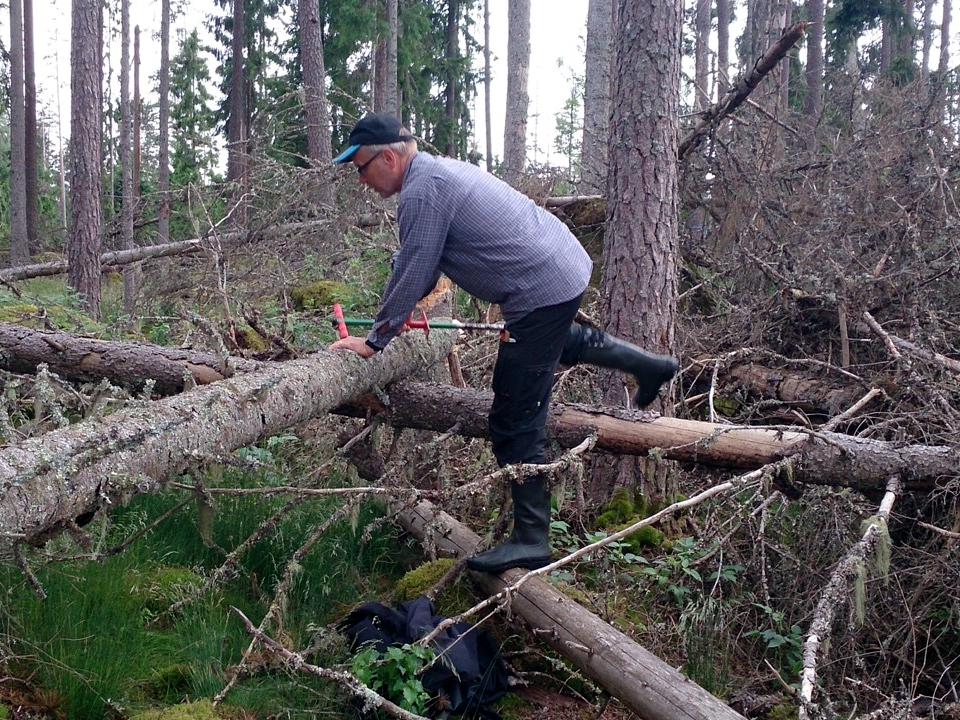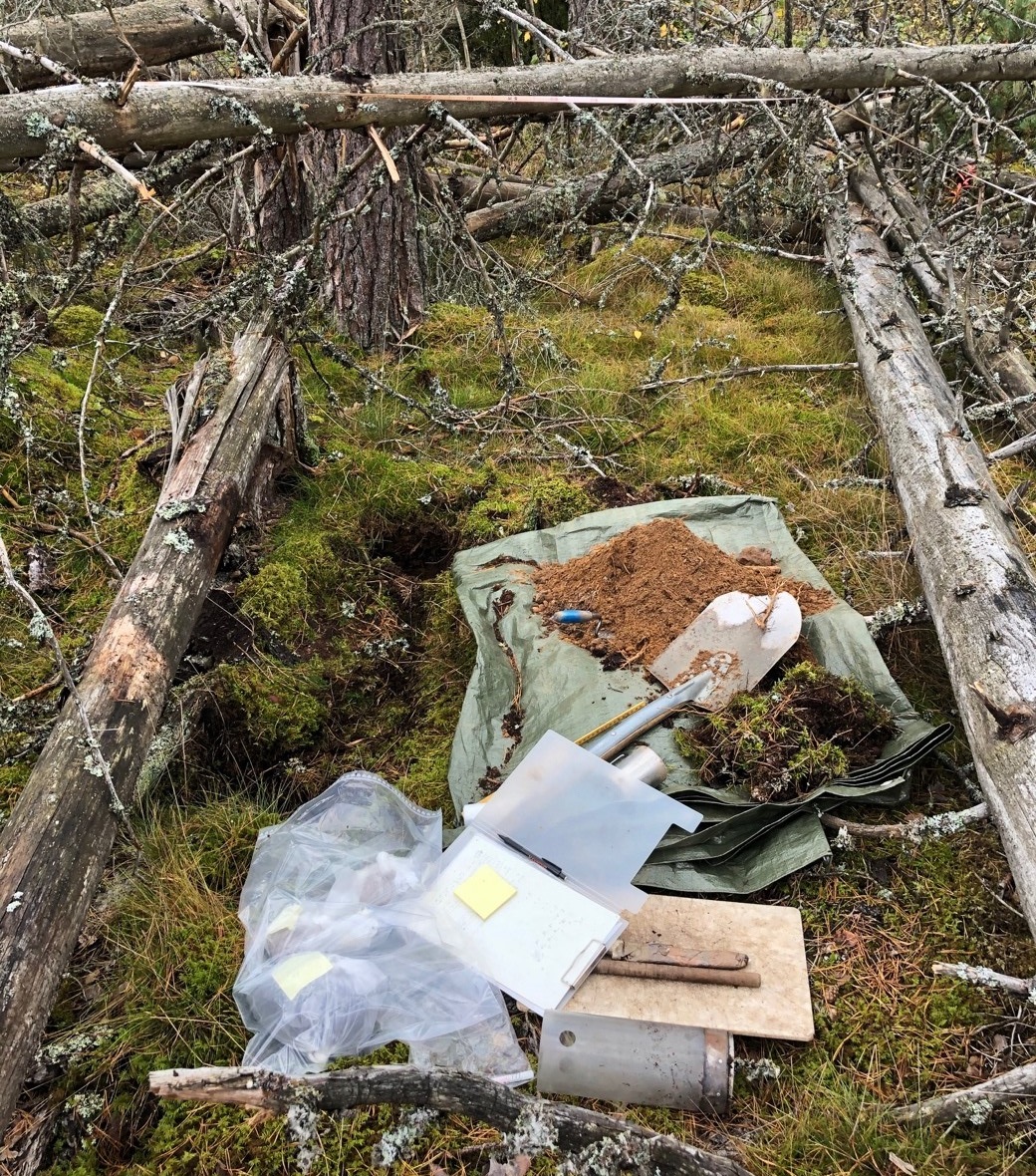
The monitoring program IM - Integrated monitoring - follows both physical and chemical processes and their impact on the biological system in four small catchments dominated by coniferous forest, located in different parts of Sweden’s climate and air pollution gradients. One of the areas, Aneboda IM, is through SITES associated with Asa Research Station. A severe storm hit Aneboda sixteen years ago, and the effects are still impacting the biogeochemical status and field work in the area. During 8–9 January 2005, southern Sweden was hit by Cyclone Gudrun. At Aneboda IM, maximum wind speeds exceeding 20 meters per second were recorded over nine hours. About 15–20 percent of the trees were knocked down by the storm.
After the storm, the fallen Norway spruce trees (Picea abies) attracted bark beetles (Ips typographus), which caused a massive insect outbreak. The beetles infested a large proportion of the Norway spruce trees that survived the storm. In the 2011 survey, almost half of all Norway spruce trees with diameters larger than 20 cm were dead. The slideshow above shows how the forest in one of the plots where the vegetation is monitored changed from a closed old growth Norway spruce stand to an open area with primarily birch saplings and large amounts of coarse woody debris, during the years 2004–2019.
 These change benefits the biological diversity in the area, but it makes part of the monitoring more difficult. As the pictures above and to the left show, both vegetation and soil sampling surveys have become a challenge for the field staff.
These change benefits the biological diversity in the area, but it makes part of the monitoring more difficult. As the pictures above and to the left show, both vegetation and soil sampling surveys have become a challenge for the field staff.Text: Stefan Löfgren and Ulf Grandin, SLU. Facts about Aneboda IM
The Aneboda IM site and the nearby forest and bog are part of a nature reserve. Long-term monitoring in Aneboda IM was initiated in the mid-1990s in semi-natural coniferous forests, where atmospheric deposition of pollutants and anthropogenically induced climate change are the main human disturbances.
Aneboda IM is one of four Swedish IM catchments within the program Long-Term Ecosystem Research in Europe (eLTER). These programs provide infrastructure, data and management for research at reference conditions on hydrological and biogeochemical processes, including interactions with the biota.
Issues of special interest are soil and surface water acidification, weathering, carbon sequestration, leaching of nutrients, DOC and trace metals, including Hg, as well as the biological effects on organic matter decomposition, bioelement uptake by vegetation and changes in the microbial and vegetation communities down to species level. The semi-natural state at these sites defines the limits for what could be expected without forest management, e.g. defining background conditions and elemental dynamics at reference conditions.